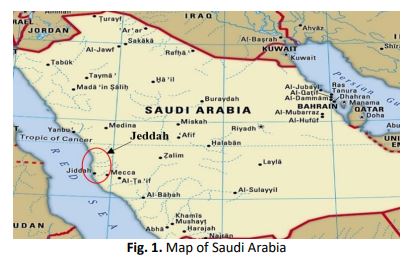Wind and Solar Resources Assessment Techniques for Wind-Solar Map Development in Jeddah, Saudi Arabia
DOI:
https://doi.org/10.37934/arfmts.96.1.1124Keywords:
Renewable energy, wind energy, solar energy, resources assessmentsAbstract
Recent decades show a massive demand increment toward clean sources of energy as the world is experiencing industrial and technological revolutions. Among the various clean energy resources, wind and solar can be utilized effectively. This study aims to study wind and solar energy potentials in Jeddah, Saudi Arabia while identifying seasonal variations of wind and solar energies in the city. The essentiality of the study relies on the added benefits to the country where this research can help in finding other alternatives of energy other than fossil fuel. The Weibull distribution function and the Angstrom techniques were respectively used for the wind and solar resources assessments. The meteorological data involved are for ten years (2010-2019) including wind speed and direction, direct and diffused solar radiations. The results show that the prevailing wind direction at 10 m and 80 m altitudes were north and north-northwest, respectively. Meanwhile, the mean wind speed at 80 m altitude is found to be 4.36 m/s and 3.72 m/s at 10 m altitudes. The highest wind power and wind energy densities were at 80 m altitude with the value of 192.19 W/m2 and 247.29 kWh/m2, respectively. In terms of solar resources, the site has an average potentiality of global solar radiation of 23.13 MJm2. The highest average possible sunshine duration occurred mostly in February, June, and November with respective values between 12.00 and 12.034 hours for most of the years. Lastly, the highest Angstrom’s ratio occurred during June 2016 scoring 0.7942 while the lowest on the other hand was in December 2015, scoring 0.4253.
Downloads
































